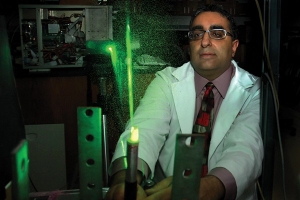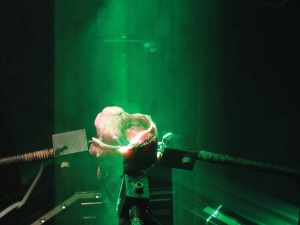University of Cincinnati aerospace engineer and doctor determine how airflow patterns can restore voices
by Katy Cosse
For 35 years, Rita Jan Christian could not speak above a whisper. When she was 18, a New Year's Eve car crash crushed her larynx and nearly destroyed her vocal cords. Multiple visits to specialists did not correct the problem, and she began experiencing the social isolation common to voice-disorder patients.
But earlier in 2011, Christian was sitting in an exam chair in a UC Health clinic, looking determined. She inhaled, pursed her lips and focused. A single long syllable, "woooo," brought a smile to two faces -- hers and speech therapist Eva van Leer's.
"Woooo. Mmmm. Vvvvv," she uttered.
"That was better," van Leer said, encouragingly. "Did you hear that? It had more clarity, less noise. Do it again."

 Past Issues
Past Issues
